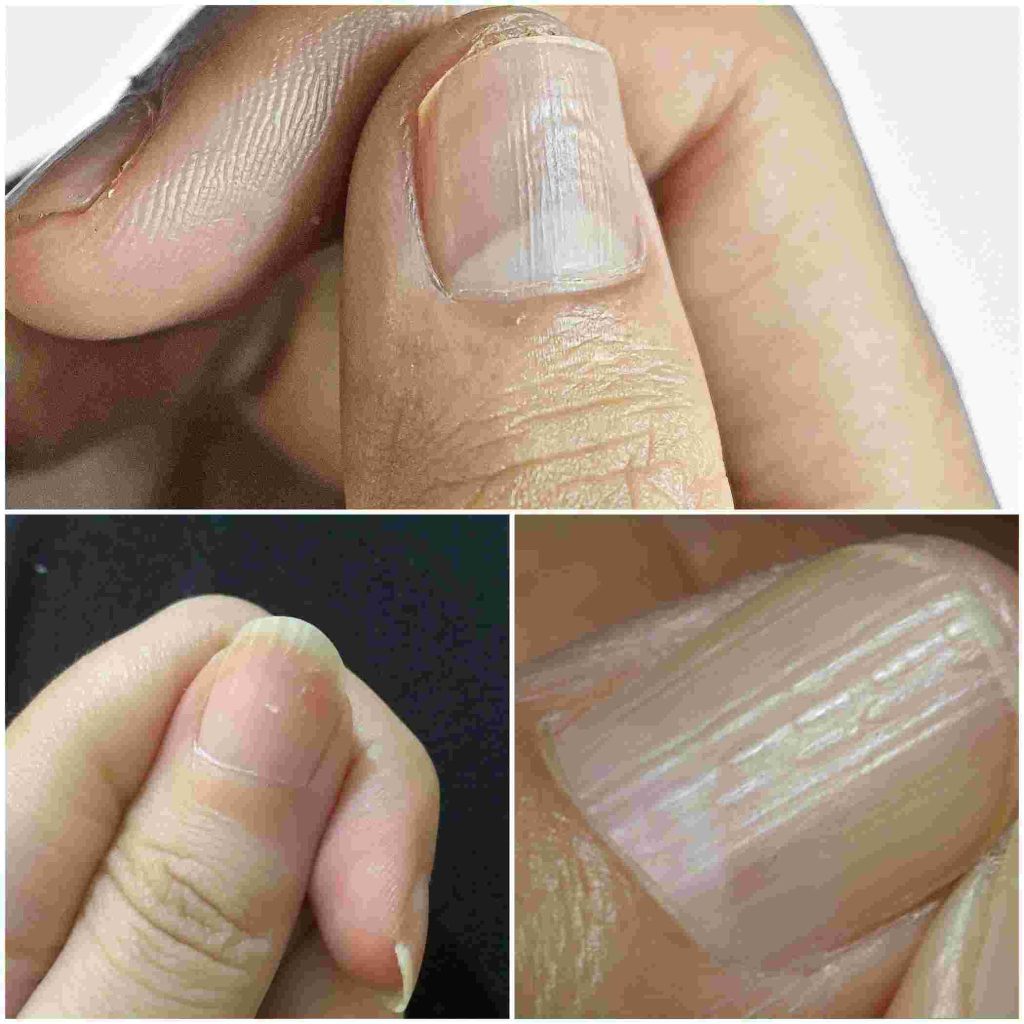
1. Aging
As you get older, it’s common for vertical lines on your nails to become more prominent. These lines, which run from the base to the tip of the nail, are typically nothing to worry about.
2. Nutrient Deficiencies
A lack of certain nutrients can also lead to changes in your nails, including the appearance of vertical lines. Key nutrients for maintaining healthy nails include:
Protein: Nails are primarily made of a protein called keratin. Without enough protein, your body may struggle to produce strong, healthy nails.
Vitamin B12: A deficiency in vitamin B12 can cause changes in nail color and texture.
Iron: Low iron levels can lead to vertical lines on the nails, and in some cases, nails may take on a spoon-like shape.
Dehydration: Insufficient water intake affects your entire body, including your nails. Dehydration can cause your nails to become weak and develop lines. It’s important to stay hydrated to keep your nails and skin healthy.
3. Nail Injuries
Physical injuries, such as crushing or habitual nail-picking, can cause lines to appear on your nails. These injuries can damage the nail bed and disrupt normal nail growth.
4. Skin Conditions
Certain skin conditions, like psoriasis or eczema, can lead to changes in the nails, including the development of ridges, particularly around the cuticles or nail bed.
5. Cardiovascular Issues
Poor circulation can reduce blood flow to the nails, affecting their growth and appearance. Conditions such as peripheral arterial disease or other cardiovascular problems may manifest as symptoms in the nails.
Final Thoughts
Vertical lines on your nails are often just a natural part of aging. However, if you notice other changes in your nails—such as color variations, changes in thickness, or additional symptoms—it’s a good idea to consult a doctor. Eating a balanced diet, staying hydrated, and avoiding nail injuries can help keep your nails healthy and attractive. Remember, your nails can be a reflection of your overall health, so it’s important to care for them.